Kitesurfing in Costa Rica: A Detailed Guide
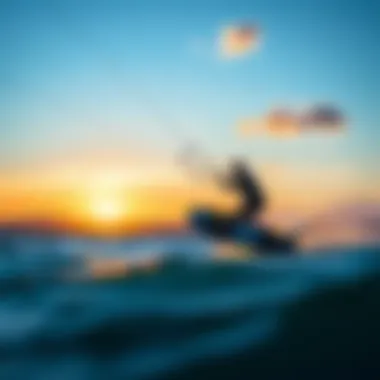
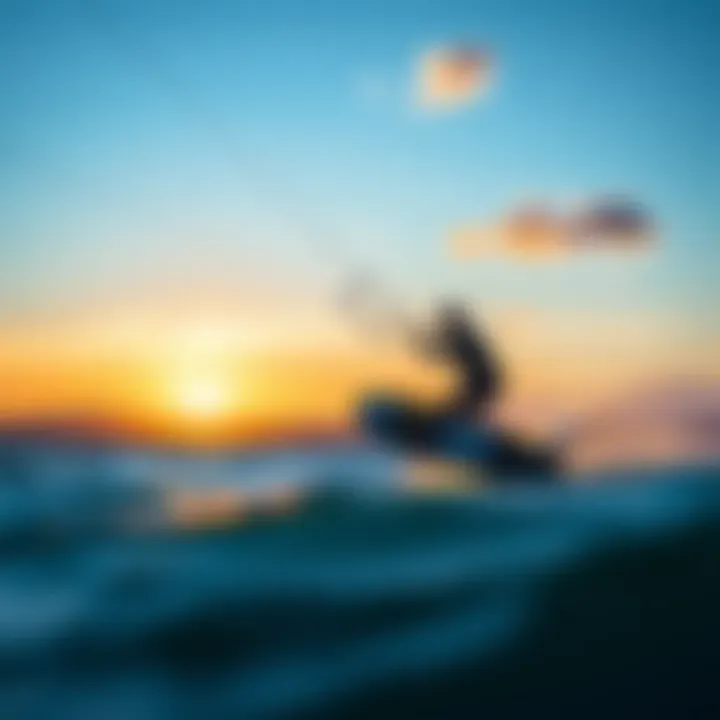
Intro
Kitesurfing in Costa Rica is more than just an adrenaline-pumping sport; it's a vibrant community filled with enthusiasts, instructors, and nature lovers. With stunning coastlines and favorable wind conditions, this Central American gem has carved its niche in the global kitesurfing arena. Whether you are a fresh face eager to ride your first waves or a seasoned veteran looking for that next thrill, there’s something for everyone along these picturesque shores.
The combination of proper gear, refined techniques, and a supportive environment makes this an appealing destination for many. As we delve deeper, you will find a detailed look at gear selection, skill development, and the key locations that define Costa Rica's kitesurfing experience.
Aside from the technical aspects, this overview aims to foster an appreciation for the local culture and the environmental considerations integral to preserving the breathtaking landscapes of Costa Rica. Join us as we unpack this exhilarating journey!
An Prolusion to Kitesurfing in Costa Rica
Kitesurfing, a blend of surfing, windsurfing, and paragliding, has gained massive traction in Costa Rica, turning it into a playground for both newbies and seasoned riders. This country, known for its stunning vistas and diverse ecosystems, provides ideal conditions for the sport.
Imagine yourself gliding over the crystalline waters of the Pacific or Caribbean, propelled by the wind and your own enthusiasm. This article serves as a compass in this wind-swept adventure, guiding you through the essentials of kitesurfing.
The importance of this segment lies in establishing a solid background on both kitesurfing as a sport and its unique marriage with Costa Rica's geography. It aims to illuminate why this Central American gem is such a desirable destination for kiteboarders of all skill levels. A key element to understand is that kitesurfing is not solely about the thrill; it also encapsulates elements like community and sustainability, which are vital to the vibrant local culture.
Benefits of Kitesurfing in Costa Rica
- Diverse Locations: From the lively beaches of Jaco to the serene waters of Lake Arenal, you can pick your playground based on your skill and mood.
- Wind Conditions: Costa Rica offers reliable wind patterns, making it possible to kite year-round.
- Scenic Backdrops: Riding the waves against lush green mountains or golden sunsets provides a breathtaking experience that enriches your time on the water.
Considerations
- Safety: Always consider safety measures and the changing weather conditions; it can turn from calm to wild real fast.
- Local Etiquette: Understanding the local kitesurfing culture is crucial—it's not just about the sport, it's about who you ride with.
- Environmental Awareness: While enjoying this exhilarating sport, consider your impact. Keeping the beaches clean ensures that future generations can enjoy them too.
"Kitesurfing is not just a sport; it’s a lifestyle that connects you to nature and people alike."
This introduction sets the stage for a more in-depth exploration of geographical advantages, top spots, and essential gear. Each section will expand on the unique offerings of Costa Rica in the kitesurfing landscape, blending the thrills with knowledge for an enriching experience.
Geographical Advantages of Costa Rica
Kitesurfing is about more than just riding the wind and waves; it’s deeply intertwined with the very landscapes where this sport thrives. Costa Rica, with its breathtaking coastal lines and unique weather patterns, presents a playground for both novices and seasoned riders alike. Each region of this Central American gem offers something distinct, catering to varying preferences and skills. Understanding these geographical advantages is essential for anyone wanting to delve into kitesurfing in Costa Rica.
Coastal Geography
Costa Rica boasts over 800 miles of coastline, divided between the Pacific Ocean and the Caribbean Sea. This expansive stretch of coastline is dotted with various beaches, each presenting different kitesurfing opportunities. On the Pacific side, areas like Jaco Beach and Playa Tamarindo are frequented by enthusiasts looking for consistent swells and ideal conditions.
- Jaco Beach is popular among kitesurfers, thanks to its vibrant local scene and reliable winds.
- Playa Tamarindo offers a blend of good wind conditions and scenic beauty, providing a delightful experience for riders.
- On the Caribbean side, Puerto Viejo tends to offer unique wind patterns, often presenting challenges for more experienced kitesurfers.
The diversity in coastal geography means that there’s a suitable spot for every kitesurfer's skill level and preferences.
Wind Patterns and Conditions
One of the key elements that makes Costa Rica a kitesurfing paradise is its wind patterns. The famous trade winds in this region offer consistency and reliability, generally blowing from December to April. These winds can be strong, ranging from 15 to 25 knots, making for thrilling rides on the water.
- Seasonal Wind Changes: During the dry season, winds are more predictable, while the wet season can bring unpredictable gusts, appealing to those seeking an adventure.
- Local Variations: Each beach has its unique wind characteristics. For example, at Lake Arenal, the thermal winds can create particularly strong gusts in the afternoon, ideal for intermediate riders looking to push their limits.
Embracing these natural wind patterns will enable kitesurfers to experience the exhilaration of catching perfect waves.
Climate Overview
Costa Rica is renowned for its tropical climate, characterized by distinct dry and wet seasons. This climate plays a crucial role in kitesurfing as it influences both wind conditions and water temperatures. The dry season, from December to April, is typically when the winds are most favorable for kitesurfing. With temperatures averaging around 80°F (27°C) during this time, the conditions are near perfect for a day on the water.
Conversely, during the wet season, which runs from May to November, you’ll often find a mix of sun and rain. The mornings usually start with calm conditions, leading to gusty afternoon winds – a shift that can be both a challenge and a thrill for kitesurfers.
For kitesurfing enthusiasts planning trips, timing may be the difference between an unforgettable experience and being stranded on the beach waiting for the wind. Knowing the seasonal climate patterns enhances the ability to choose the right time for adventure, allowing for maximum enjoyment on Costa Rica's stunning waters.
"Understanding the geography and weather patterns helps kitesurfers not just to ride, but to thrive. Having a good grasp of one’s surroundings is just as important as having quality gear."
In summary, Costa Rica's coastal geography, wind patterns, and climate create a unique environment for kitesurfing. Each of these geographical advantages contributes to what makes Costa Rica a sought-after destination for kitesurfers around the globe. Choosing the right spot according to the conditions can be the cornerstone of a successful and exhilarating kitesurfing experience.
Top Kitesurfing Spots in Costa Rica
Kitesurfing in Costa Rica isn’t just about the thrill of catching the wind; it’s also about the stunning spots that this beautiful country offers to riders. When looking for the ideal kitesurfing destination, various elements come into play – from wind conditions to the surroundings and atmosphere. Each location presents unique conditions and experiences, making it vital for enthusiasts to understand what each spot has to offer. Here’s a closer look at some of the top kitesurfing locations that are not only a playground for skills and tricks but also invoke the spirit of adventure in every surfer.
Lake Arenal
Sitting under the watchful gaze of Arenal Volcano, Lake Arenal stands as one of the gems in Costa Rica. The lake is notorious for its strong winds, particularly during the dry season from December to April, which makes it an ideal spot for both novices and experts. The expansive water body allows for expansive maneuvers and tricks by giving enough space for riders to spread their wings.
Why Visit Lake Arenal?
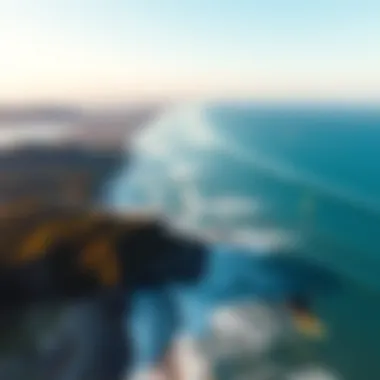
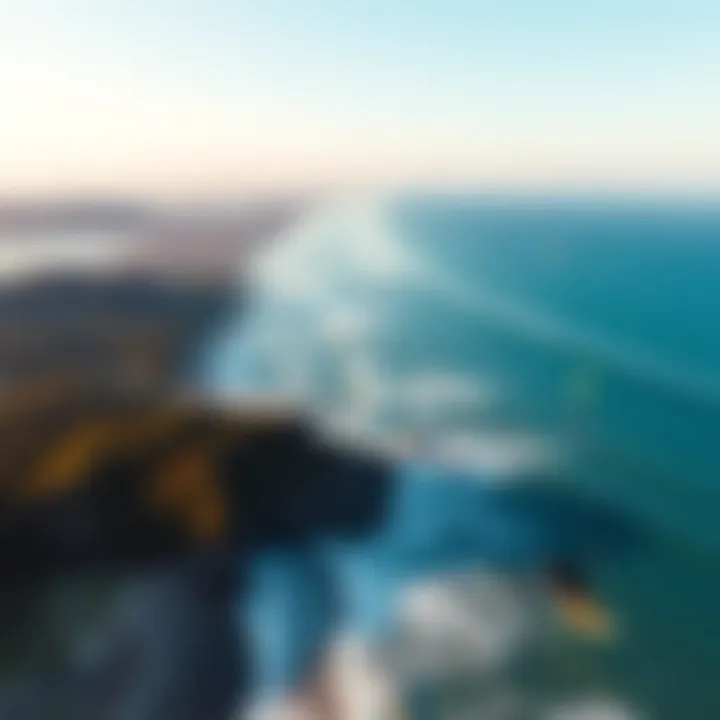
- Consistent Wind: The thermal winds kick in during the afternoons, providing plenty of consistent wind.
- Scenic Views: The backdrop of the volcano mingled with lush greenery adds a few extra points to your kitesurfing adventure.
- Variety of Conditions: You can find both flat sections and wave spots, catering to varied skill levels.
A local favorite, Lake Arenal is where many kitesurfing schools also operate, making it a good choice for those wanting to learn. Giving it a shot here can lead to quite an exhilarating experience.
Jaco Beach
Jaco Beach, often buzzing with life, offers a different flavor compared to quieter spots. The beach is renowned for its variety of water sports, but kitesurfing has its dedicated following. The wind conditions are generally best from May to November, which means it’s more than just a summer spot.
Notable Features of Jaco Beach:
- Vibrant Environment: With numerous cafes and bars nearby, it’s a great place to unwind after a satisfying day on the water.
- Perfect for All Levels: The combination of wind patterns and wave height caters to beginners through advanced levels.
- Good Instruction Options: You can easily find local kitesurfing schools and instructors here to help you hone your skills.
Jaco Beach is not just about the surf; it’s a lifestyle. The mix of local culture and thrilling wind makes every session a memorable one.
Playa Tamarindo
Next on the list is Playa Tamarindo, a favorite among both locals and tourists alike. This beach has gained popularity not just for its kitesurfing but also for its sunsets that could leave anyone at a loss for words. Expect a bustling atmosphere where the waves and wind create an energetic vibe.
Characteristics of Playa Tamarindo:
- Diverse Conditions: The location features a mix of flat water and waves, excellent for riders wanting to switch things up.
- Wind Consistency: The dry season often brings favorable winds, especially between November and April.
- Community Feel: A close-knit kitesurfing community thrives here, fostering camaraderie among riders.
For anyone looking to experience the essence of kitesurfing in Costa Rica, Tamarindo is where you can soak up both the thrill of the sport and the warmth of local culture.
Pavones
Finally, we reach Pavones, a beautiful stretch of coastline known for its stunning surf. Known mainly among seasoned surfers, Pavones is one of the lesser-known kitesurfing spots, making it a hidden treasure. The wind here can be quite gusty, providing an exciting challenge for advanced riders.
Why Choose Pavones?
- Unspoiled Nature: Compared to busier beaches, Pavones offers a more serene environment where you can connect with nature.
- Advanced Challenges: The conditions can be tricky but rewarding for those seeking a demanding experience.
- Limited Crowds: The quieter atmosphere truly lets you enjoy what kitesurfing is all about without distractions.
For those willing to travel off the beaten path, Pavones presents kitesurfing in all its glory, combined with picturesque surroundings that make every ride special.
In summary, whether you’re after an energetic experience or a more tranquil one, these top kitesurfing spots in Costa Rica offer something for everyone. Ride the wind and make ever-lasting memories in these amazing locations.
Choosing the Right Gear for Kitesurfing
Selecting the appropriate gear for kitesurfing can make or break your experience on the water. Imagine trying to surf with a board that's too heavy or a kite that doesn't catch enough wind; it sounds frustrating, right? That's why understanding the ins and outs of kites, boards, and safety equipment is paramount. The right gear not only enhances performance but also significantly contributes to safety, allowing riders to enjoy the thrill without overlooking potential hazards.
Kites: Types and Specifications
Kites come in various shapes and sizes, each designed for specific conditions and riding styles. Broadly, kites can be categorized into two types: inflatables and foil kites.
- Inflatable Kites: These are the most common and versatile. They are easy to relaunch and offer a good balance of lift and power, making them ideal for beginners and intermediate riders alike. Most inflatables range anywhere from 5 to 17 meters, determined by the skill level and wind conditions.
- Foil Kites: Less common, but a solid choice for advanced riders seeking a lightweight option. These kite types don't require a structure to remain open, which makes them more efficient. However, having the right experience is crucial as they demand a different handling technique.
When choosing a kite, consider aspects like the wind range it can handle, as well as the aspect ratio. A higher aspect ratio kite will be much faster but can also be more challenging to control, especially for novices.
Boards: A Guide to Selection
Board selection is another critical consideration, as it can affect your speed, maneuverability, and comfort. There are primarily three types of boards:
- Directional Boards: Designed for surf-style riding, these are great for those exploring waves. They work like surfboards and require a specific stance.
- Twin-Tip Boards: The most common board type among freestylers and beginners. They allow you to ride in both directions, offering flexibility and ease of use.
- Foil Boards: A more recent innovation, these boards lift above the water, giving you the sensation of flying. They require a learning curve but can be exhilarating once mastered.
When choosing a board, consider the width and length, which will influence stability and speed. For instance, a wider board provides more stability, while a narrower board generally allows for better speed.
Harnesses and Safety Equipment
Last but definitely not least, the right harness and safety equipment are critical for a successful kitesurfing experience. A harness secures you to the kite's control bar, making it essential for transferring the kite's power to the board. There are two main types of harnesses:
- Waist Harnesses: Popular among freestyle riders. They offer more freedom of movement and a lower profile, making them suitable for tricks and jumps.
- Seat Harnesses: Provide more support and are easier to maintain posture during extended rides. They can be particularly beneficial for beginners as they distribute pressure better.
Moreover, safety equipment like quick release systems, helmets, and impact vests should not be overlooked. These ensure that even when things go awry, you're sufficiently protected against the risks associated with kitesurfing.
"The safety gear might not add glamor, but it sure can add years to your kitesurfing journey!"
Kitesurfing Instruction and Training
Kitesurfing is not just about harnessing the wind and riding the waves; it’s an intricate dance that demands both skill and finesse. As enticing as it may seem, diving into the world of kitesurfing without proper training can lead to both frustrating mishaps and, more seriously, danger. This section is dedicated to the essential aspects of instruction and training that can facilitate a safe and enjoyable kitesurfing experience, ensuring riders can develop their abilities progressively.
Finding Qualified Instructors
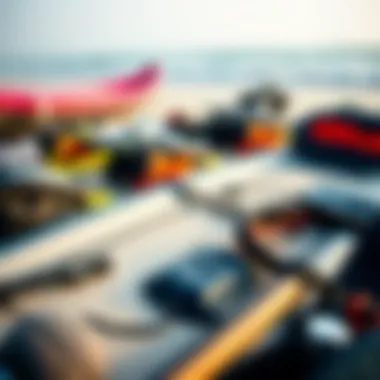
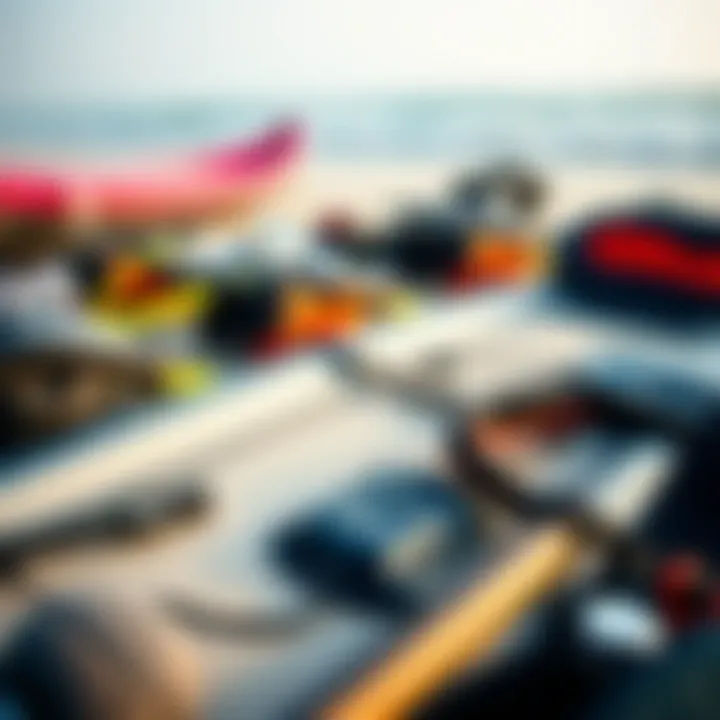
The process of learning kitesurfing often starts with finding the right instructor. In Costa Rica, there are a number of skilled instructors who offer comprehensive lessons. It's crucial to look for instructors who are certified by recognized organizations. A good instructor not only teaches the technical skills but also instills essential safety measures.
When searching for an instructor, consider the following:
- Qualifications: Verify certifications from recognized bodies like the International Kiteboarding Organization (IKO) or the Association of Professional Kiteboarding Schools (APKS).
- Experience: Look into how long they’ve been teaching and ask about their own kitesurfing background.
- Reviews and Recommendations: Check platforms like facebook or local kitesurfing forums to gather feedback from previous students.
- Teaching Style: Every learner is unique. Hence, it’s advantageous to communicate your learning style and see if the instructor can tailor lessons to your needs.
Progressive Learning Techniques
Once you’ve secured a qualified instructor, it’s time to delve into the learning process. Progressive learning techniques are often emphasized in kitesurfing training. These methods are designed to help students gradually build their skills in a safe and structured environment. Here are a few key techniques often employed:
- Ground Schooling: Before hitting the water, many instructors will conduct a ground school session. You'll get acquainted with the kite, safety procedures, and how to control the kite on land.
- Controlled Environment Training: Beginners typically start in safe, flat water locations. In Costa Rica, areas like Lake Arenal provide perfect conditions for this phase.
- Incremental Steps: First, students learn to control the kite, then move to body dragging, and finally progress to standing on the board.
- Feedback Loops: Good instructors provide constructive feedback, allowing students to adapt their techniques as they advance.
Common Mistakes and How to Avoid Them
Kitesurfing, like any sport, comes with its own set of common pitfalls, especially for beginners. Recognizing these can save you a headache. Here’s a glance at frequent errors:
- Neglecting Safety Gear: Always wear a helmet and a buoyancy vest. Skimping out on proper gear can lead to serious accidents.
- Ignoring Conditions: Understanding wind and sea conditions is crucial. Never go out if conditions seem too challenging.
- Overconfidence: Rushing progression can lead to accidents. It’s important to master each skill before moving to the next level.
- Improper Kite Setup: Ensure the kite is set up correctly every time. A misconfigured kite can severely impact flight and control.
Learning is often best achieved through mistakes. However, recognizing these common missteps can keep your journey enjoyable and safe.
Safety Practices in Kitesurfing
When it comes to kitesurfing, engaging in the sport without a sense of safety can quickly turn an adrenaline rush into a large risk. Understanding safety practices not only enhances the enjoyment of the sport but also protects both the rider and surrounding individuals. With the diverse nature of locations in Costa Rica, various safety elements come into play, making it crucial for both beginners and seasoned kiters to grasp them thoroughly.
Understanding Weather Conditions
In kitesurfing, the adage "know before you go" rings especially true. Before heading out into the water, riders must carefully assess the weather conditions that could impact their safety. Factors such as wind speed, direction, and the presence of storms are pivotal.
- Wind Speed: Generally, a wind speed of 12 to 25 knots is considered ideal. Riders venturing out in winds above 30 knots should rethink their decision as conditions might quickly escalate.
- Forecasting: Familiarize yourself with forecast tools and apps that provide up-to-date information. Local resources, like Windy.com, offer live wind maps for Costa Rica.
- Storm Signs: Keep an eye on the horizon. Dark clouds or sudden drops in wind speed can be telltale signs of an impending storm.
By continuously monitoring weather conditions, kiters can not only enjoy their sessions but also avoid dangerous situations that may arise from unpredictable changes.
Emergency Protocols
Even with the best planning, accidents can and do happen. Having a set of emergency protocols can make a significant difference in how situations are managed. Here are some important protocols to consider:
- Learn Basic Rescues: Familiarizing yourself with rescue techniques can be life-saving. This includes knowing how to right your board and kite after a fall, as well as how to signal for help.
- Buddy System: Kitesurfing is always safer when done in pairs or groups. Make sure to check in with your buddies before heading out and establish a meeting point in case anyone gets separated.
- Carrying Safety Gear: Always carry a knife to cut through lines if necessary, and ensure your life jacket and helmet fit properly. Kitesurfers are required to wear these, especially in certain locales, to help mitigate injury risks.
- Emergency Services: Know the local emergency contact information. In Costa Rica, emergency services can be reached at 911, but sometimes specific areas have direct contact numbers for local lifeguards or rescue teams. It’s worth doing a little research prior to your adventures.
In the world of kitesurfing, preparedness is the first line of defense against misfortune.
Implementing these safety practices not only enhances the luxury of kitesurfing but also fosters a shared sense of concern for fellow kiters. By prioritizing safety, riders contribute positively to the overall kitesurfing community in Costa Rica, making the oceans safer for everyone.
The Environmental Impact of Kitesurfing
Kitesurfing is not just about zipping across the waves; it's also crucial to consider its ripple effects on the environment. Understanding the impact of kitesurfing is essential for both enthusiasts and the local community in Costa Rica. This section dives into the environmental aspects, aiming to foster awareness and inspire responsible practices among kiteboarders.
In coastal regions, kitesurfing can affect marine ecosystems as well as local wildlife. It’s paramount to explore how this thrilling sport coexists with nature and what kiteboarders can do to mitigate their impact. Recognizing these elements enables better decision-making for a sustainable kitesurfing experience.
"The ocean is a shared space. If we take care of it, it will take care of us."
Sustainable Practices for Kitesurfers
Sustainability is more than a buzzword; it’s a necessity in preserving the natural beauty that draws people to Costa Rica’s shores. Here are several sustainable practices that kitesurfers can adopt:
- Choosing Eco-Friendly Gear: Opting for equipment made from sustainable materials greatly reduces the environmental imprint. Many brands now offer kites and boards made from recycled materials or sustainably sourced options.
- Respecting Wildlife: Always be aware of your surroundings. Areas where wildlife breeds or feeds should be avoided, especially during seasons when these activities are most prevalent. Observing from a distance is crucial.
- Beach Cleanliness: It’s everyone’s job to keep the beaches clean. Regularly picking up after oneself and participating in local cleanup initiatives fosters a community spirit while preserving the beauty of the sport's playground.
- Educating Others: Share knowledge about sustainable kitesurfing practices with fellow enthusiasts and newcomers. A little education can go a long way in shifting perspectives and behaviors.
Implementing these practices helps to ensure that kitesurfing remains a viable activity for generations to come, allowing sport and nature to grow hand-in-hand.
Conservation Efforts in Costa Rica
Costa Rica is famous for its commitment to environmental conservation. The efforts to preserve its diverse ecosystems are notable, and kitesurfers play a significant role in supporting these initiatives by being conscious participants in this delicate environment.
Several organizations are at work in Costa Rica to promote conservation, which kitesurfers can engage with:
- Protected Marine Areas: Many kitesurfing locations fall within protected zones aimed at conserving wildlife and marine environments. These areas are designed to restore damaged ecosystems and promote biodiversity.
- Local Community Programs: Participating in or supporting local programs focused on beach conservation or marine life protection is highly encouraged. Engaging local experts as guides not only enriches the kitesurfing experience but can provide opportunities to learn about and contribute to ongoing conservation efforts.
- Wildlife Rehabilitation Centers: Supporting and volunteering at wildlife rehab centers can directly impact the recovery of injured animals affected by various human activities, including water sports.
Being aware of and acting on conservation efforts helps kitesurfers align their passion with preserving the striking landscapes and wildlife of Costa Rica. In the long run, a commitment to caring for the environment enhances the appeal of kitesurfing, ensuring that future generations can enjoy the thrill of the waves.
In summary, the environmental impact of kitesurfing in Costa Rica encourages a balance between recreation and ecology. Whether through sustainable practices or active engagement in conservation, every kiteboarder holds the potential to make a positive contribution to the natural world.
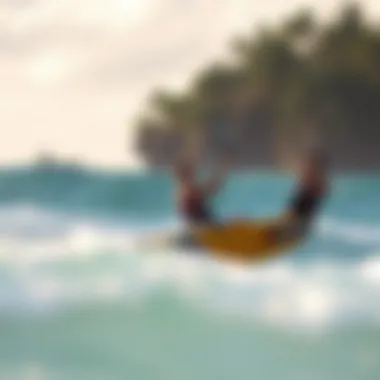
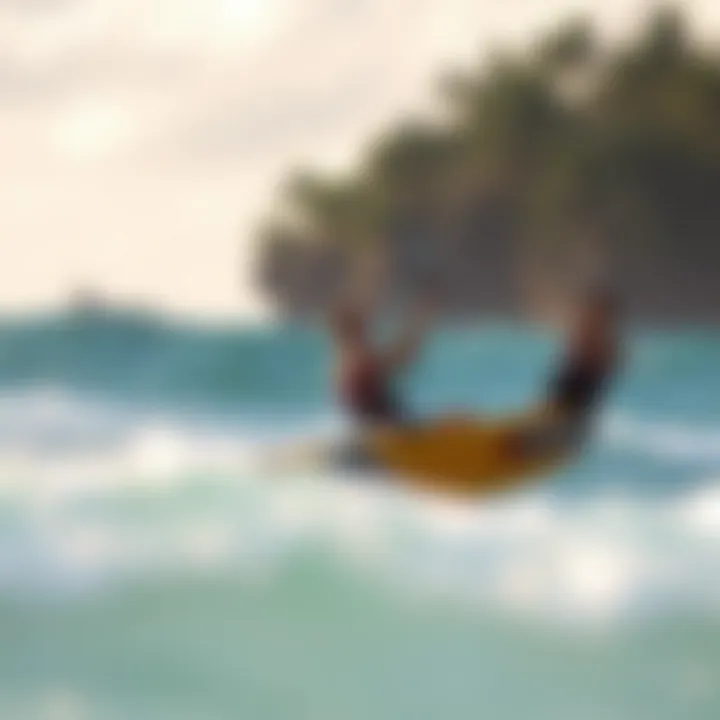
The Kitesurfing Community in Costa Rica
The kitesurfing community in Costa Rica serves as the heartbeat of the sport within the country. It is a vibrant collective that not only promotes participation but also fosters a strong bond among both new and experienced riders. This community provides an invaluable support system, offering camaraderie, advice, and a shared passion for the waves and winds that Costa Rica is so famous for.
One of the significant benefits of joining this community is the wealth of knowledge that members share. From tips on the best gear to insights about local conditions, the community ensures that no rider feels alone on their journey. As one might say, "a rising tide lifts all boats"; here, it means that everyone’s improvement can also boost the overall quality of kitesurfing in the area.
Moreover, the camaraderie leads to friendships that can last a lifetime. By participating in local events and competitions, riders can meet others who share their interests and challenges. These connections often extend beyond kitesurfing itself, creating a supportive atmosphere that celebrates various aspects of life in Costa Rica.
Events and Competitions
The excitement within the kitesurfing community in Costa Rica is palpable during its numerous events and competitions. These gatherings not only heighten awareness of the sport but also showcase the skills of local riders. Typically organized throughout the year, events like the Costa Rica Kite Challenge invite professionals and amateurs alike to compete in a friendly and exhilarating environment.
Participating in these events presents several advantages:
- Skill Enhancement: Riders can challenge themselves, pushing their limits and discovering new techniques.
- Exposure: Events attract attention from sponsors, which can open doors for financial support and endorsements.
- Networking: Meeting other riders, brands, and influencers can lead to long-term partnerships and friendships within the industry.
These competitions, complemented by casual meet-ups, help cultivate a robust culture around kitesurfing. Besides the thrill of competition, locals often share the spotlight with international visitors, enriching the experience and creating cultural exchanges that highlight both superb riding and the beautiful backdrop of Costa Rica.
Networking Opportunities
Networking within the kitesurfing community extends beyond personal relationships; it can impact careers and businesses as well. Being part of this community allows riders to connect with kiteboarding schools, equipment retailers, and local tour operators. They can share experiences about the best gear, trusted instructors, and the most breathtaking locations to ride.
A few aspects to consider for effective networking include:
- Engaging on Social Media: Social platforms like Facebook and Instagram serve as vital tools for connecting with fellow kiteboarders. Regular participation in these forums can enhance one’s visibility and lead to unique opportunities.
- Attending Workshops and Clinics: Many communities organize specialized training events aimed at improving specific skills. These are great places not only to learn but to forge connections with instructors and fellow enthusiasts.
- Volunteering at Events: Assisting in organizing local competitions can increase your connections to industry players and fellow riders. Plus, being behind the scenes provides unique insights into the workings of the community.
Knowing where to meet people, leveraging social media, and attending events can be key in tapping into the full potential of the kitesurfing community. As the saying goes, "It’s not what you know, but who you know"—in this case, knowing the right bogey will pair you with better opportunities and a more enriching kitesurfing experience.
Tips for a Memorable Kitesurfing Experience
Kitesurfing isn’t just a sport; it’s an experience packed with thrill, adventure, and an ample dose of freedom. To truly soak in everything this water sport offers, it's essential to have a few tricks up your sleeve. Every kitesurfer, whether a newbie or a seasoned pro, should keep certain considerations in mind to enhance their time on the waves. Understanding these tips can help you not only enjoy the sport better but also create lasting memories on the breathtaking shores of Costa Rica.
Capturing the Moments: Photography Tips
Every journey on the water can tell a story, and capturing these moments helps preserve the thrill long after the last ride. Here’s how you can make the most of your photography:
- Invest in a Good Camera: While smartphones have come a long way, nothing beats a dedicated camera, especially one that’s waterproof. Look for models that can withstand splashes without a hitch. Cameras like the GoPro Hero might be low on weight but high in durability and functionality.
- Use Proper Settings: Ensure that you set your camera’s shutter speed high enough to freeze the action. Kitesurfing is about speed, so aim for at least 1/1000s to prevent any blurring.
- Find the Right Angles: Instead of just shooting from the beach, consider wading into the water or shooting from a nearby cliff. Various heights and perspectives can add layers to your shots.
- Action Shots: For those dynamic moments, gear up with a fast burst mode. This enables you to capture sequences of tricks while the kites and riders create mesmerizing patterns against the vibrant ocean backdrop.
- Edit Wisely: Once you've got those shots, a little post-editing magic can go a long way. Play with shadows and highlights, keeping the colors vibrant but true to life. We want to relive those sunsets, not paint them in an unnatural hue.
Capturing these moments will not only help you create a visual diary of your adventures but also share your thrilling experiences with fellow kite enthusiasts.
Exploring Beyond Kitesurfing
While the waves beckon and the winds urge you to kite, don’t forget the wonders beyond the kiteboarding scene. Costa Rica has a treasure trove of experiences waiting for you:
- Local Cuisine: Savor the vibrant culinary landscape. From the simple yet flavorful Gallo Pinto to fresh ceviche, your taste buds will thank you. Don’t miss out on the street food stalls; they can be hidden gems.
- Nature Exploration: Take time to explore the lush jungles and serene waterfalls. Activities like hiking in Manuel Antonio National Park or visiting the stunning La Fortuna Waterfall offer a refreshing break from the wind and waves.
- Cultural Insights: Engage with local communities. Partake in traditional festivities or local artisan workshops. It enriches your experience beyond the water and helps you appreciate the culture of your diving spot.
- Wildlife Watching: Costa Rica is a haven for biodiversity. You can catch glimpses of sloths, monkeys, and various birds; perhaps, even a sighting of a toucan or two! These encounters create a connection to nature that enhances your travel experience.
- Relaxation and Wellness: Don’t forget to unwind. Many beaches offer yoga sessions at sunrise or sunset, providing the perfect counterbalance to your adrenaline-fueled days.
Through these explorations, you not only become a better kitesurfer but also a well-rounded traveler. Traveling is about the experiences you accumulate, and merging kitesurfing with cultural immersion in Costa Rica will leave you with stories to share for years.
"Traveling is about the beautiful feeling of teetering in the unknown."
Be adventurous, stay safe, and enjoy the vibrant kiteboarding community as you carve your way through the beautiful landscapes.
The End: Embracing the Kitesurfing Lifestyle in Costa Rica
As we wind down our journey through the vibrant kitesurfing scene in Costa Rica, it becomes crystal clear that embracing this lifestyle is more than just a thrill ride over the water. It’s about diving into a community, appreciating breathtaking landscapes, and developing a deeper respect for the environment. The fusion of wind and waves in Costa Rica creates an allure that pulls dedicated enthusiasts and rookies alike to its shores.
The Benefits of Kitesurfing
Kitesurfing in such a breathtaking locale brings with it a cornucopia of benefits. First and foremost, it promotes a unique bond with nature. When you’re gliding over the azure tides, there’s a refreshing sense of freedom—a feeling akin to flying. This not only stimulates a rush of adrenaline but also encourages mindfulness and presence in the moment. You become immersed in your surroundings, from the swaying palms to the rhythmic sound of the ocean.
Joining the Kitesurfing Community
Furthermore, the kitesurfing community in Costa Rica is an inviting one, often aiding newcomers in finding their way. Through local schools, meet-ups, and events, riders forge friendships that span borders and cultures. Whether it’s a shared laugh at a mishap or high-fiving each other after nailing a trick, those connections add an enriching layer to the overall experience.
Additionally, becoming part of this community opens avenues for networking. From seeking advice on gear to discovering lesser-known spots, seasoned riders are often more than willing to share their tips. Going beyond the sport, you’ll find that kitesurfing invites exploration of Costa Rica’s diverse ecosystems—be it through joint excursions or community-clean-up efforts, which underscore the importance of conserving such a precious environment.
"Kitesurfing is not just a sport; it's a way to honor the beauty of nature and foster connections that inspire us to protect it."
Environmental Consciousness
Embracing the kitesurfing lifestyle also entails a commitment to environmental consciousness. The valuable ecosystem surrounding Costa Rica’s beaches relies heavily on stewardship from its visitors. Engaging in sustainable practices, like respecting wildlife and reducing waste, is vital. This alignment not only enhances the experience but also ensures that future generations can enjoy these stunning environments.
The Continuous Journey
Kitesurfing here is more than a hobby; it’s a lifelong journey of skill development and self-discovery. Each session on the water teaches resilience, patience, and perseverance. Riders continuously learn, adapt, and push their own limits, which keeps the sport engaging and dynamic.
In concluding, kitesurfing in Costa Rica serves as a gateway—a melding of exhilarating sport, community camaraderie, and environmental stewardship. There is no better place to engage in kitesurfing while simultaneously fostering friendships and creating memories that will last a lifetime. No matter if you're just starting or are a seasoned pro, embracing this lifestyle means embracing a piece of paradise while cherishing the vibrancy of life that the ocean and community provide.















